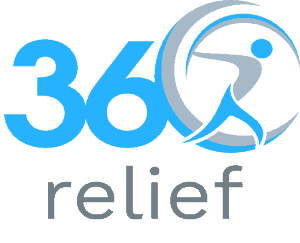
Make This Christmas Pain-Free: 10% Off on Supportive Wear!
Holidays are coming, which means that let’s welcome them with joy, laughter, and, of course, some comfort! At 360 Relief,

According to statics of John Hopkins Medicine, around 3.5 million US children aged 14 or under are injured doing organised sport. This is out of an estimated 30 million that take part. It would seem logical that a similar percentage of teen sports injuries occurs in the UK and other countries. We encourage teenagers and young people to be active. This helps them stay fit, fight off illnesses, maintain stronger mental health and make friends. However, their bodies are still growing, so they must be careful not to push themselves too far.
Table of Contents
ToggleThe most common kinds of teen sports injuries are strains and sprains in joints like the ankles strains, knees sprains, shoulders injury, wrists sprain etc. This generally stems from misuse of the area in question, falling awkwardly or traumatic contact with another player. Head injuries are one of the most serious types, with immediate professional medical help required and careful monitoring. Sports that see a lot of head injuries include cycling, skating, skiing and skateboarding.

Some sports are also more dangerous than others, although all forms of physical activity carry some level of injury risk. Contact sports like rugby or boxing are statistically more dangerous than solo sports like swimming or gymnastics, for fairly obvious reasons. Teen sports injuries tend to happen more during practice session and training than in matches.
There is plenty you can do to help your teenager or child stay safe on the pitch, court, playground and in the gym or studio. Here are some ideas.


In order to help prevent teen sports injuries, we can do a lot around modelling best practice. For a start, if we want teenagers to get active, we should show them the benefits by taking part in sports ourselves. Always warm up and cool down to demonstrate the benefits of doing so. Show your young people some good exercises and stretches to do to prevent teen sports injuries. Stop when you feel your body needing a break.
Whenever your child is taking part in sport, discuss their exercises and activities with them. This not only motivates them to carry on, but alerts you to anything that might be amiss in what they are being asked to do. Keep in touch with coaches, captains, teachers and physio support staff to help you understand what’s involved.
Finally, make sure your teenagers have the right kit to rehabilitate them after being injured. Things like braces, sports wraps, knee supports and wrist straps can make a huge difference. Speak to an expert to ensure you choose the right type and size for maximum effect.

Holidays are coming, which means that let’s welcome them with joy, laughter, and, of course, some comfort! At 360 Relief,

Happy Cyber Monday to everyone; it is a perfect occasion for 360 Relief to offer a special discount of 10%

This Black Friday, take advantage of exclusive 10% savings on some of 360 Relief’s best-selling compression socks and support braces!

Everyday life includes walking up stairs, but knee discomfort can make this basic activity difficult. Walking up or down stairs

Cooking is a beloved activity for many, but for those struggling with knee pain, standing in the kitchen can quickly

We’ve all been there. On a ride in a car, for instance, to the country home for a weekend break

Gardening is enjoyable for many people and those who like tending to their lawns and plants usually find it therapeutic

Do you have a painful knee problem that takes you to physiotherapy…for an injury that hampers your daily living…your workout

Training can be very much associated with some pains and injuries that may be experienced by the trainers. As there

Office workers often spend hours seated at their desks, focusing on tasks while unknowingly putting their health at risk. The

Winter often brings more than just a change in weather; for many, it also means dealing with unexpected swelling in

Compression socks have become a critical tool for athletes across all sports. Whether you’re a marathon runner, cyclist, or weightlifter,

October marks the beginning of National Cholesterol Month in the UK, a time dedicated to raising awareness about cholesterol and

Overall, there is nothing to match the experience of watching musicians perform live in an outdoor concert in Glastonbury. However,

Today charity runs have gained popularity as a way of raising cash for a cause in the United Kingdom. From
Please enter your email to subscribe to our newsletter for exclusive offers and updates
Copyright © 2025 | 360 Relief Ltd | Sitemap

